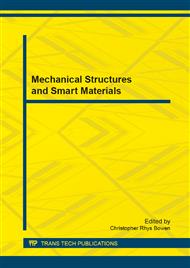p.102
p.106
p.110
p.114
p.121
p.127
p.131
p.135
p.141
Melt-Processable Acrylonitrile-Methacrylate-Dimethyl Maleate Terpolymers and Fibers
Abstract:
A series of acrylonitrile (AN)-methacrylate (MA)-dimethyl maleate (DMM) terpolymers with different molar ratios were fabricated by emulsion polymerization. The feeding ratio agrees well with the composition of AN-MA-DMM terpolymer. With increasing the molar ratio of DMM in terpolymer, glass transition temperature (Tg) increases to higher temperature at first and then decreases. Tg drops to the lowest value-78.6 °C when the feeding ratio is 85/13/2 mol%. The melting temperature (Tm) of 85/11/4 AN-MA-DMM terpolymer is the lowest at-137.2 °C, while its resistant temperature (5 wt% weight loss, T0.05) rises up to the highest value, -314.9 °C. DMM plays an important role in improving the melt flowability of PAN based copolymer. The cross sections of 85/14/1 AN-MA-DMM fiber are compact and the outer surfaces of the fiber are smooth. Tensile strength of AN-MA-DMM fiber is 3.4 cN/dtex.
Info:
Periodical:
Pages:
121-126
Citation:
Online since:
January 2014
Authors:
Keywords:
Price:
Сopyright:
© 2014 Trans Tech Publications Ltd. All Rights Reserved
Share:
Citation:


